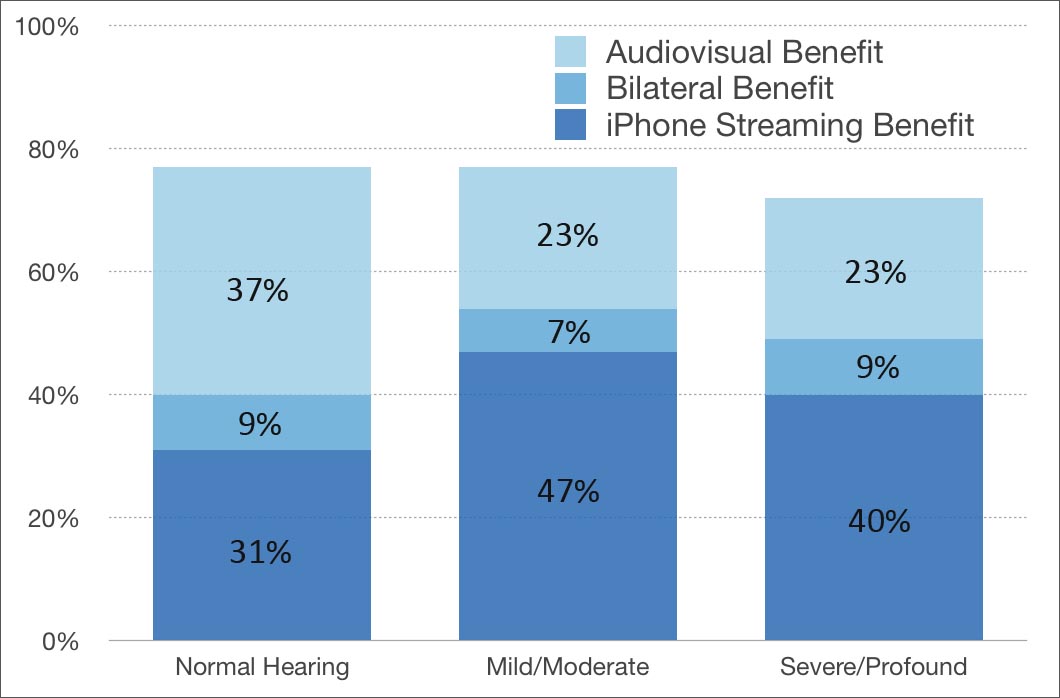The Phone Challenge
Listening on the telephone is a challenge for hard of hearing people. Placing the telephone directly to one ear may cause hard of hearing persons to miss or misunderstand words in conversation, which can be frustrating to both sides. Luckily, hearing aid manufacturers are developing ways to help make this easier. A recent study by ReSound found that the use of FaceTime with their MFi (made for iPhone) hearing aids was shown to improve phone conversations by up to 70%. That is a big deal. But first, lets look at the four main reasons why Hearing aid users find it harder to listen on the telephone;
- Need the volume of the voice to be much louder than the background noise to be able to understand.
- Often rely on hearing in both ears for improved clarity
- Are more dependent on visual information like lips movement or facial expression.
- It can be a challenge to properly position the phone so that the sound is picked up by the hearing aid microphones and also to avoid feedback.
How Bluetooth Technology Helps
Over the years, new technologies such as Bluetooth connected hearing aids and cellphone applications have introduced a new and better way to listen on the telephone. The following table shows the results of a study looking at how Bluetooth can be used to improve comprehension on the phone.
 Results from Jespersen & Kirkwood 2016*
Results from Jespersen & Kirkwood 2016*
First, by sending the phone audio directly to the hearing aid through Bluetooth, it allows us to provide the volume needed to understand. This also improves the separation of speech from the background noise. Compared to the traditional method, listening with both ears combined with a direct connection to the hearing aids improves speech understanding by 54% for people with mild to moderate hearing losses and by 58% for those with severe to profound hearing losses.
Subsequently, it also reduces the likelihood of interfering feedback caused by holding the phone receiver over the ear and hearing aid. Next, it allows us to stream the voice signal to both ears, helping to improve speech understanding.
Finally, hearing aid users are more dependent on visual information than normal hearing people. Combining an application like FaceTime to your mfi hearing aids improves speech understanding to an astounding 77% for people with mild to moderate hearing losses and 71% for people with severe to profound hearing losses!
How Do You Use Bluetooth?
Most of the hearing aids sold in the past 5 years have some form of built in wireless communication. For most of these, it is possible to get a Bluetooth gateway accessories. These are typically a device which either hangs around your neck or clips on to your shirt or collar. Examples of these devices include the Resound Phone Clip+, Phonak ComPilot and Widex Com-Dex. These systems can be used in conjunction with a smartphone. By using a program like Skype or FaceTime, it offers the full benefits shown in the graph above. If you are using them with a simple mobile phone, they can still be used to get the 54% and 58% improvements because of the direct streaming benefits and the binaural benefits.
MFi Hearing Aids – The Next Generation
Apple has done a lot of work with their iPhones and iPads to increase accessibility. Connecting your iPhone directly to your hearing aids can be done with this new generation of MFi hearing aids. With brands like ReSound, Starkey, Oticon, Signia and Widex all offering mfi products, streaming from your phone has never been easier. With these mfi devices, you no longer need to wear a neck loop of clip on device to bridge the gap between the phone and the hearing aids. Come visit one of our offices at the Davidson Hearing Aid centres to find the best option for you a give it a try!
*Click this link for the full study: hearingreview.com/speech-intelligibility-benefits-facetime-advantages-everybody/






